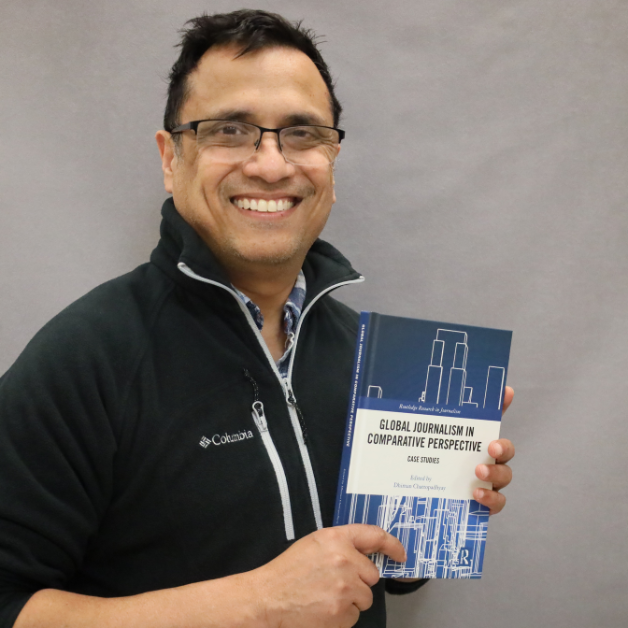Dr. Dhiman Chattopadhyay, associate professor in the communication, journalism and media department, specializing in journalism and strategic communications here at Shippensburg University, has recently published his latest book, “Global Journalism in Comparative Perspective.” This is an edited volume of his original publication from December 2023, and that contains chapters written by 16 scholars across 11 different countries.
Chattopadhyay saw a clear lack of books and resources available on what true international journalism is. Historically, most existing works on the topic have been “Eurocentric and Western-centric” in nature. Due to this, the full lens of global journalism has failed to be captured. Professor Chattopadhyay addresses these gaps by discussing how journalism presents itself differently based on political, cultural, societal, economic, technological and ethical standards in different regions of the world.
To achieve a wide variety of perspectives and expertise, Chattopadhyay adopted a “snowball method”, reaching out to experts globally and inviting them to contribute to various topics such as the safety and security of journalists, technology within journalism, journalism education, and a variety of other topics within the realm of global journalism. He collected case studies from 11 different countries and five continents, which highlights a diverse range of methods and challenges faced by journalists across the globe.
A few of the key themes that Chattopadhyay explored included journalism autonomy, safety, freedom of journalists, and how the interpretation of both freedom and freedom of speech distinctly exists depending on the region. His book, “Global Journalism in Comparative Perspective” showcases how each of these concepts differs throughout the world. He emphasizes how the media portrays itself differently in the eastern world where democracy is unique from the west, in parts of the world like China that face authoritarian regimes, and in war-stricken parts of the world.
Some of the cases in Chattopadhyay’s publication are written from the lived experiences of practicing journalists, like a professor from Ukraine, who was also a practicing journalist. The Ukrainian professor essentially wrote his story as he was living it, putting his life and safety on the line.
In the age of online media, Chattopadhyay’s book dives into the challenges that exist globally within journalism, ranging from issues such as the pandemic, politics, human rights, and beyond. Chapters dive into the rise of misleading information on social media and the struggle to maintain credibility and trustworthiness in today’s digital era.
As media continues to evolve, Chattopadhyay acknowledges the importance of diversity in shaping the narratives within journalism. He noted that “A newsroom is a place for ideas. It’s a place for what matters, and what doesn’t. When we have a singular chain of thought, of what’s important, that naturally excludes all other thoughts. So, when you have people from different walks of life, rich and poor, young and old, black and white, men and women, whoever, you have different thought processes in a newsroom. Naturally, there will be more ideas that come forward.” In Chattopadhyay’s book, his research further highlights the message that diversity is crucial in journalism and encourages new journalists to frequently engage with a diverse range of audiences on all platforms.
To learn about the practice of journalism around the globe in a way that has not been recognized before, Chattopadhyay’s edited volume of Global Journalism and Comparative Perspective is available now for purchase directly from the publishing company’s website, Routledge, as both an eBook and print. It is also available to buy on Amazon, Barnes & Noble and various other book websites.
Also, be on the lookout for Chattopadhyay’s special appearance on WITF’s ‘The Spark’, airing on May 2nd at 12:00 p.m. and again at 8:30 p.m. Chattopadhyay will be delving into two decades of experience in international journalism and talking about both his 2022 book on Indian journalism and social media’s impact, as well as this year’s edited volume.


